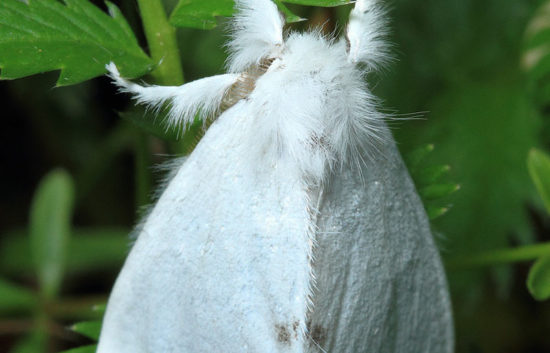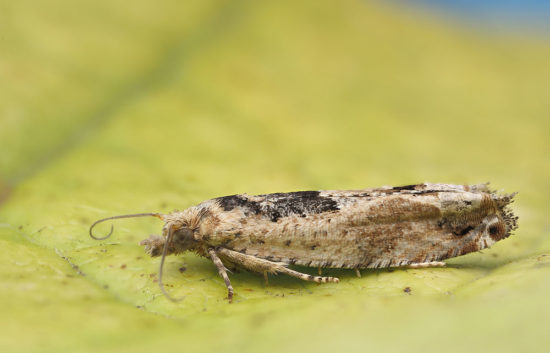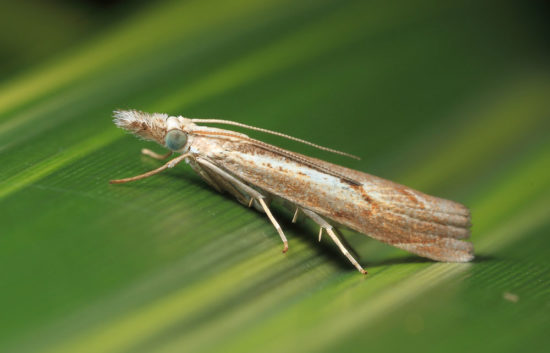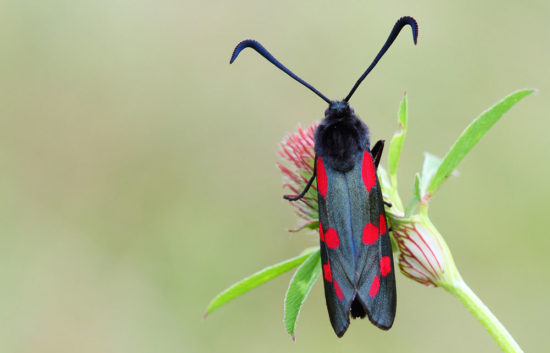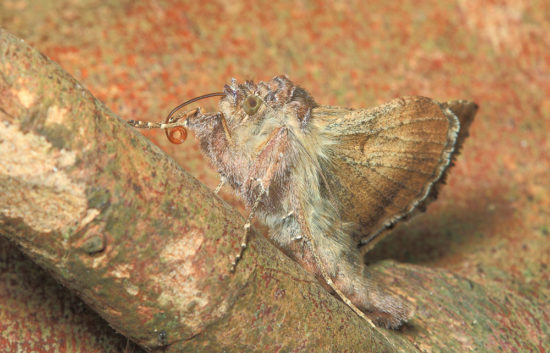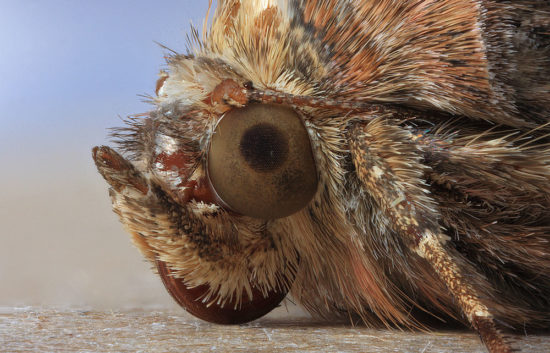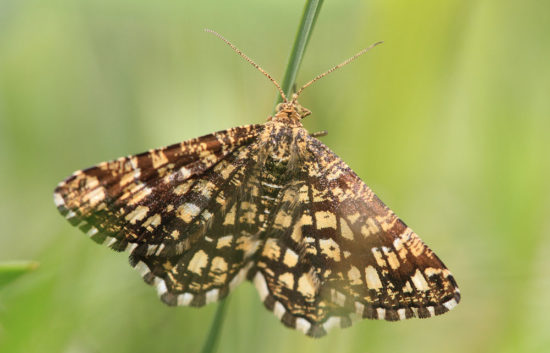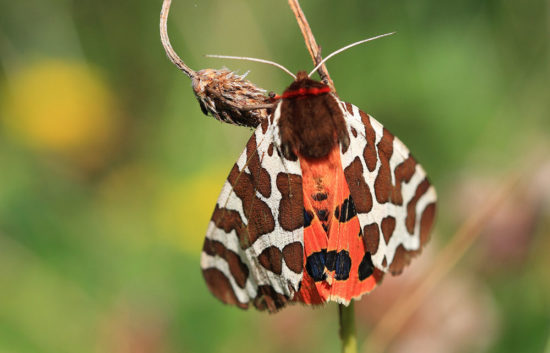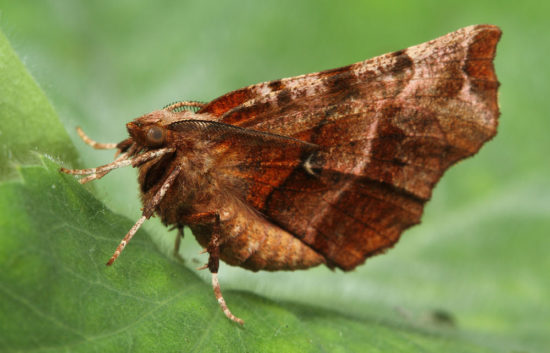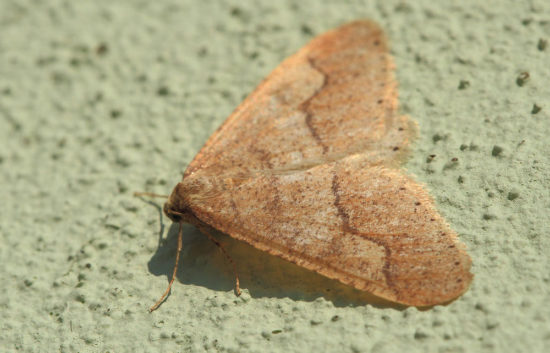All parts of the adult are pure white with the female being larger than the male and having a large tuft of yellow hairs at the top of her abdomen (hence its name), which is used to cover the newly-laid...
Tuta absoluta 5mm. First seen Cheltenham, Gloucestershire, in 2010. Potential threat and could become established in commercial Tomatoe-growing farms and greenhouses. Originally from South America, now established in S Europe. is a devastating pest of Tomato. It is originated from South...
As their name suggests, Grass Moths are usually found in grassy situations. A typical example, the Straw Grass-veneer (Agriphilia straminella) is common and widely distributed although its small size (8-10mm} makes it difficult to spot while resting in the grass....
This is the most commonly found burnet. It occurs throughout England, Wales and Ireland, but is more local in Scotland, being largely confined to coastal sites. During the day, it behaves very like a butterfly, moving from flower to flower...
The Silver Y, one of the most commonly seen day-flying moths, is an immigrant from continental Europe. Coastal sites are good places to search for this species, where thousands can sometimes be seen together, but it can occur almost anywhere....
At first I thought this was a butterfly because it was flying in the sunshine, basking with its wings open and would often settle with them raised up over its body. Almost all moths fold their wings down along their...
Pic 1: The conspicuous patterns serve as a warning to predators, because the moth’s body fluids are poisonous. The moth normally hides its hindwing under the cryptic forewings when resting. If a threat is perceived, the moth quickly shows its...
First capture taken with my (then) new camera, Canon 7D. I was getting fed up with constantly having to change lenses from the MPE-65mm to the 100mm Macro and vice versa. In the studio it’s no big deal but in...
The male has orange-brown forewings with a paler yellowish band and a row of dots along the edge of the wing which gives it its common name. The hind wings are whitish with a faint band. There are also melanic...

